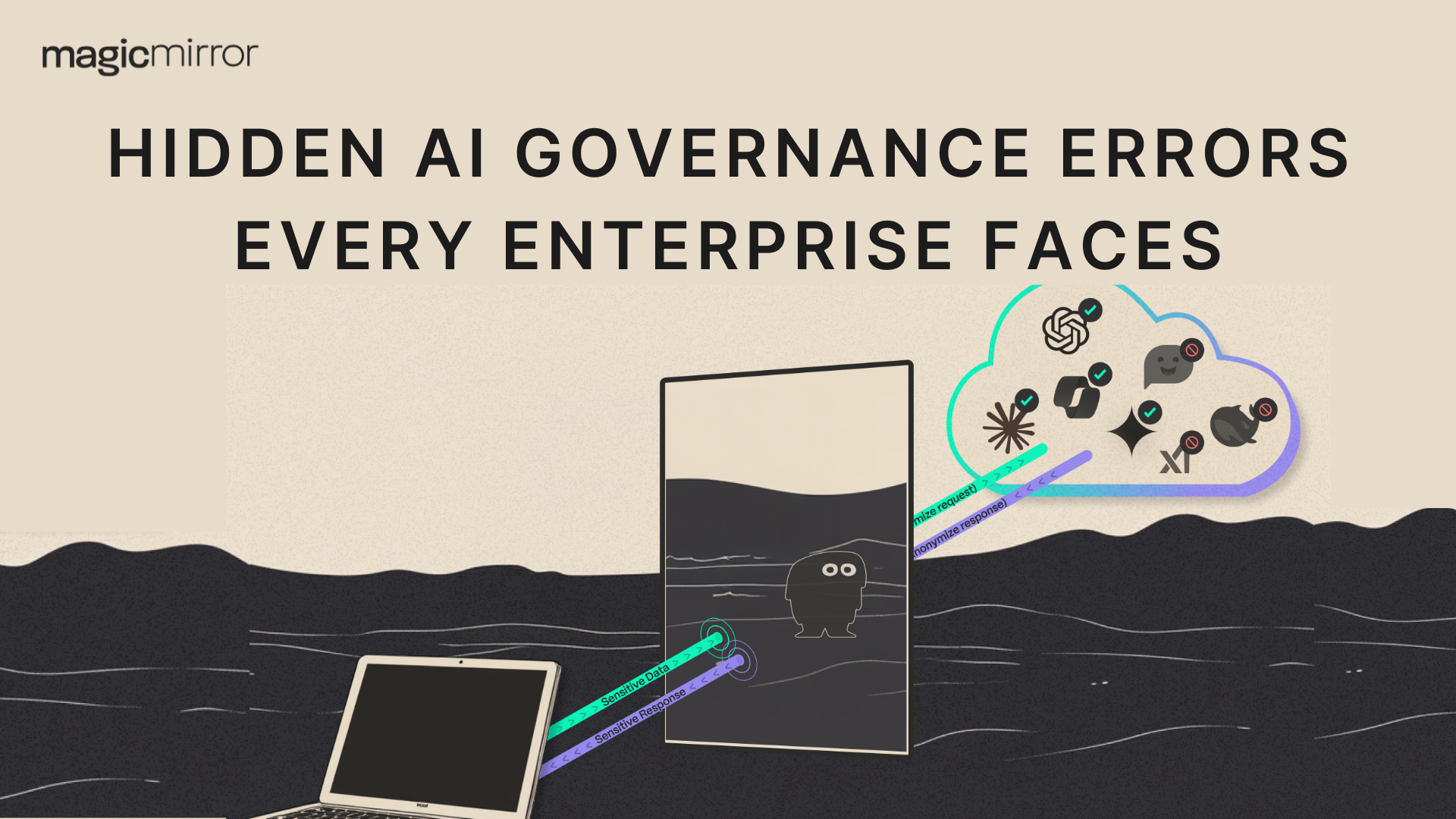

Generative AI is moving fast, but governance is still playing catch-up. Many organizations rely on policies that look solid on paper yet fail under real-world pressure. From unmonitored tools to invisible model drift, AI oversight failures are occurring more frequently and silently than leaders realize.
This post highlights five common AI governance mistakes enterprises make, explains how these errors lead to risk governance issues, and discusses what it takes to address them before they become compliance problems.
Despite an explosion in AI investment, many governance programs remain paper shields, high on policy but low on protection. Organizations create frameworks, assign roles, and conduct audits, yet AI oversight failures keep surfacing. Why?
Because most AI risk governance errors aren’t technical; they’re structural. The real danger lies in how AI risk is misunderstood, under-prioritized, or siloed. These blind spots expose organizations to compliance violations, reputational damage, and strategic misalignment.
For an in-depth look at how these pitfalls play out across real organizations, Relyance.ai shares concrete examples and guidance.
AI isn’t just an IT concern; it’s a legal, ethical, and operational risk. Yet many organizations hand governance entirely to technical teams and assume coverage.
Why this fails:
Better approach:
Cross-functional oversight ensures AI innovation doesn’t outpace accountability.
One of the biggest governance blind spots is assuming AI behaves like regular code. It doesn’t.
Traditional software is deterministic. AI is a dynamic model that evolves, learns, and sometimes degrades over time. Standard change logs can’t explain why a chatbot suddenly generates biased responses or a fraud model starts missing red flags.
Without AI-specific visibility, teams miss signals like:
What to do instead:
Governance must evolve beyond SDLC checklists to reflect adaptive system behavior.
Not all AI risks reside within official systems. Shadow AI-unsanctioned tools used by employees are a growing source of exposure.
Why it’s risky:
Employees seeking productivity often bypass policy:
These well-meaning actions can create unmonitored data flows and compliance breaches.
Where Shadow AI hides:
Mitigation steps:
Visibility policy alone is the antidote to Shadow AI.
AI systems rarely fail suddenly; they decay slowly. Model performance slips as data shifts or business context changes. Most teams don’t notice until it’s too late.
Common symptoms:
Unchecked drift can result in biased lending, flawed hiring, or missed fraud detection.
Governance fix:
Governance is about lifecycle vigilance; launch is just the beginning.
Governance fails fastest when no one owns it. Undefined accountability slows response and weakens compliance posture.
Why it matters:
How to fix it:
Clear accountability keeps governance operational theoretically.
Move from reactive to proactive governance. Embed ethical design, cross-team collaboration, and post-deployment monitoring into every AI initiative. Use transparent documentation, third-party audits, and employee training to foster a culture of responsible innovation.
You can also link to internal or external resources (e.g., an AI compliance guide) to support deeper learning.
From a regulatory perspective, ensure your governance design aligns with relevant frameworks, such as the EU AI Act, NIST’s AI Risk Management Framework updates, or other jurisdictional laws. For example:
When building governance, align with such frameworks, your internal artifacts (risk management plans, transparency reports, impact assessments) should map to regulatory expectations so that audits or external reviews are seamless.
MagicMirror offers organizations a practical way to operationalize AI oversight. While policies are foundational, proper governance requires visibility and control across every AI touchpoint.
MagicMirror delivers:
By embedding AI observability into daily operations, MagicMirror enables security, compliance, and IT leaders to identify AI risk governance errors before they escalate, allowing them to course-correct without slowing innovation.
Governance isn’t just documentation; it’s discipline in action. MagicMirror provides enterprises with the visibility and control needed to transform oversight from static policy into continuous, measurable protection.
With real-time insight across data, models, and workflows, MagicMirror identifies governance gaps before they escalate, enforces compliance automatically, and keeps your AI ecosystem ethical, auditable, and aligned with regulation.
Book a Demo Today to see how MagicMirror brings AI governance to life, turning compliance into confidence without slowing innovation.
AI governance mistakes occur when organizations rely on policies instead of continuous oversight, leading to blind spots, compliance risks, and unmonitored model behavior that damage accountability and trust.
AI oversight failures expose enterprises to regulatory fines, data privacy breaches, and bias issues. Continuous monitoring and clear accountability are vital to maintain ethical, compliant AI operations.
Typical AI risk governance errors include siloed ownership, lack of post-deployment monitoring, missing data lineage, and overreliance on automation—each increasing operational, ethical, and reputational risk.
Prevent AI governance mistakes by embedding real-time monitoring, cross-functional accountability, and transparent documentation throughout the AI lifecycle to detect bias, drift, and compliance gaps early.